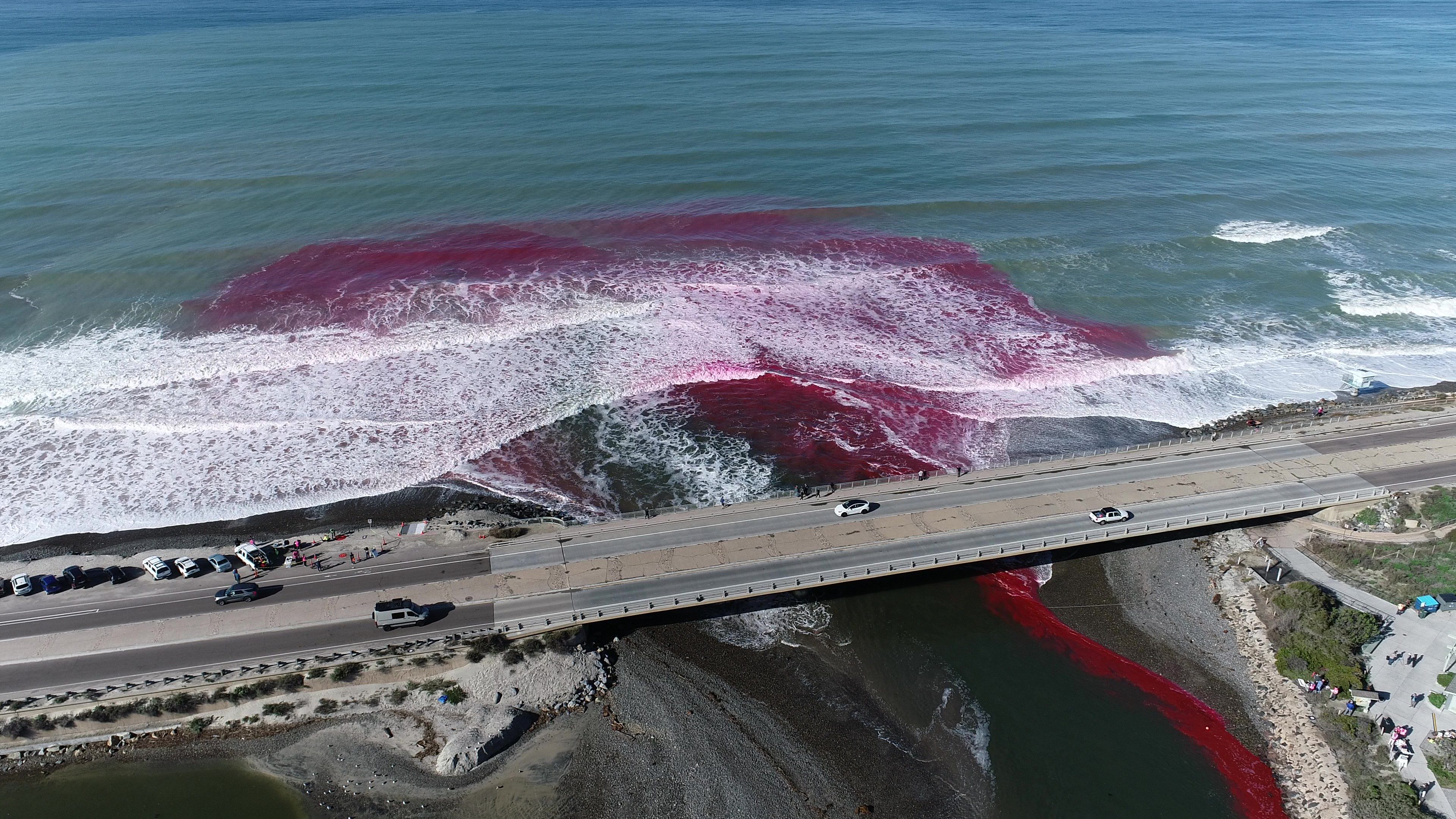Picture the scene: a beautiful bright clear California day, the sun is shining, the sky is blue, the ocean is pink. Wait, what? Well, thanks to scientists at UC San Diego’s Scripps Institution of Oceanography and the University of Washington that’s exactly what you’ll get if you go down to San Diego beach in January and February.
To study how freshwater outflows are mixing with the ocean surfzone, they’ve started an experiment called Plumes in Nearshore Conditions, or PiNC (see what they did there).
“I’m excited because this research hasn’t been done before and it’s a really unique experiment,” said Scripps coastal oceanographer Sarah Giddings, who is leading the PiNC study, in a statement.
The experiment is focused on the area around Los Peñasquitos Lagoon, located within Torrey Pines State Beach and Natural Reserve in San Diego, California. The team wants to investigate how freshwater, which is more buoyant and usually warmer than the ocean, interacts with the waves.
That’s where the pink dye comes in, by coloring the freshwater the team can track where the small freshwater plumes are meeting the saltwater surf. The environmentally safe dye will then be tracked as it progresses, both by drone and by sensors on poles situated along the sand. There’s even a jet ski fitted with a fluorometer that can measure the light emitted from the dye. Outside of the surf zone further sensors can measure salinity, temperature, the height of the waves, and the ocean currents.

Investigating how freshwater outflows interact with the surfzone using a pretty-hard-to-miss color. Image courtesy of © Scripps Institution of Oceanography at UC San Diego
This is the first of the dye releases with two more planned for towards the end of January and early February. The researchers hope that the pink dye will be able to tell them more about how sediment, pollutants, and even larvae travel into the ocean through these freshwater outflows.
“We’re bringing together a lot of different people with different expertise, such that I think it’s going to have some really great results and impacts,” continued Giddings. “We will combine results from this experiment with an older field study and computer models that will allow us to make progress on understanding how these plumes spread.”
If that’s tickled you pink, learn about this bubblegum bright lake that stays pink all year round.
Source Link: Why Are Scientists Dying The Ocean Pink In California?